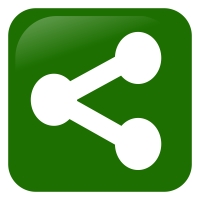|
The Quick Items tab (of the tab 'Permanent') is a list of programs, files, folders and Internet pages that are frequently used at the same time, similar to the favorites in the corresponding programs. Many programs have an option for favorites or a recently used list but most of them have their caveats:
- Windows manages a list of recently used documents with the pin function on each of the application icons currently visible in the Task Bar. While this seems to be a very useful thing I repeatedly lost entries there. Sometimes the list was cleared at an update of a program (eg. Microsoft Visual Studio), sometimes the list got messed up and displayed the same item 20 times (eg. Notepad++), so there must be a bug somewhere. Also, these lists are usually limited to a very low amount of entries, and much worse, they are neither alphabetically sorted nor can be reordered interactively. Another disadvantage is that you cannot transfer them to another computer.
- The Windows Desktop (File Explorer) manages a list of favorites and you can also create links to files and folders in the form of icons. Drawbacks: Favorites to external drives often break and you can't fix them easily. Then, the list of favorites is bound to the PC and can't be easily transported to another one. Further, they will vanish when you reinstall Windows. And finally, links on the desktop are usually visually covered by windows of running applications.
- Web addresses: In browsers they can be managed and used quite good. But you will first have to start the browser and you can't open more than one at a time.
- Favorites in File Explorer windows also fire up just a single item.
Mighty Desktop's Quick Items improve all of that.

They are
- able start resp. open multiple applications, documents, folders and web addresses at once
- bundled to a group with a name
- always directly accessible by the notify icon in the Task Bar of Windows
- can be invoked by a Mighty Command, Mighty Action or Hotkey
- updated automatically if you rename a file or folder
- unlimited in their numbers
- presented alphabetically or by invocation count
- easily transferable to another computer using the export-import functions in the 'Settings' tab and also by clipboard.
The entry in the 'Pathname patterns and Urls' column can be multiple lines. Each line is processed and executed individually as if it were typed into a command prompt. In addition, pattern characters such as '*' and '?' are also evaluated. So, for example, if you write "C:\My text files\*.txt", all files with extension ".txt" in this directory will be opened in the default editor.
A special notation for opening plain text files is supported: You can write
Chapter "Title" of "C:\MyTexts\TextFile.txt"
which will search the textfile for a chapter title in the form
Title
-----
(or underlined by another underline character at least 3 times) and call your configured text editor for plain texts whereby positioning it on the chapter (handing over the line number). If the chapter isn't found the text will show the top. And one more goodie: Quick Items include a count of how many times they were invoked. This allows to have the most used ones at the top and sort out rarely used ones.
Notes:
- You have the option to add items directly in File Explorer by right clicking on them and selecting "Add to Quick Items". This can even be done if you are in a third party application in the dialog for opening or saving files.
- You can also add multiple items by simply dragging and dropping them into the text box.
- The parameter for a Quick Item's name is called 'QuickItemName', not 'Name', because 'Name' is already taken for the Mighty Command's name.
The paste operation has some special abilities when pasting multi-line text:
- If you select multiple Quick Items and copy them to the clipboard a text of multiple lines like "Quick Item 'Name'..." is produced. Such a textual description can be pasted on another machine even if the regional language is different.
- Any plain text of multiple lines that you paste is interpreted as a list of paths that should form a single new Quick Item.
- Duplicate Quick Items or paths are just skipped.
The idea is that you can easily share lists of Quick Items over the net, for example to transport them to another user or computer.
|



